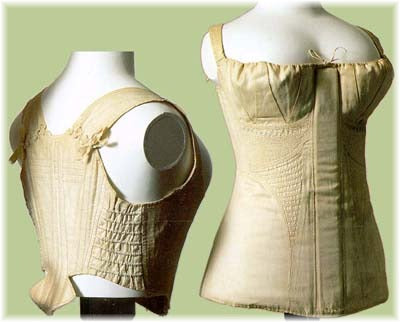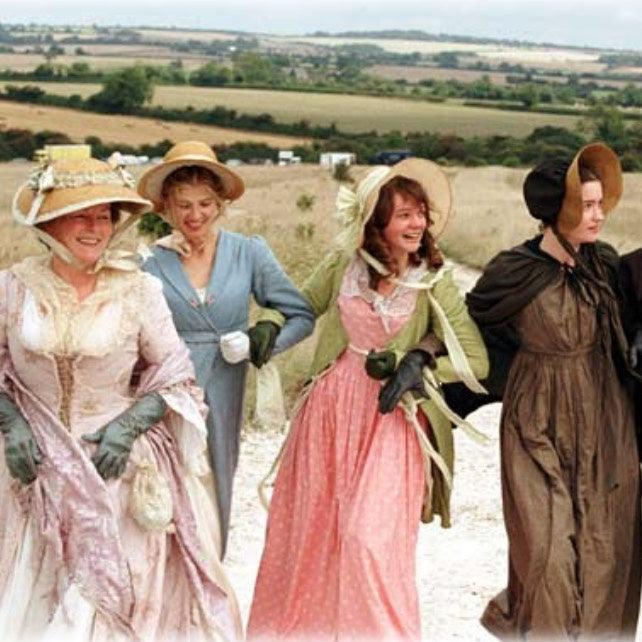Mrs Beeton On the Important Subject of Dress and Fashion
 On the Important Subject of Dress and Fashion we cannot do better than quote an opinion from the eighth volume of the “Englishwoman’s Domestic Magazine.” The writer there says, “Let people write, talk, lecture, satirize, as they may, it cannot be denied that, whatever is the prevailing mode in attire, let it intrinsically be ever so absurd, it will never look as ridiculous as another, or as any other, which, however convenient, comfortable, or even becoming, is totally opposite in style to that generally worn.”
On the Important Subject of Dress and Fashion we cannot do better than quote an opinion from the eighth volume of the “Englishwoman’s Domestic Magazine.” The writer there says, “Let people write, talk, lecture, satirize, as they may, it cannot be denied that, whatever is the prevailing mode in attire, let it intrinsically be ever so absurd, it will never look as ridiculous as another, or as any other, which, however convenient, comfortable, or even becoming, is totally opposite in style to that generally worn.”
In purchasing articles of wearing apparel, whether it be a silk dress, a bonnet, shawl, or riband, it is well for the buyer to consider three things: I. That it be not too expensive for her purse. II. That its colour harmonize with her complexion, and its size and pattern with her figure. III. That its tint allow of its being worn with the other garments she possesses. The quaint Fuller observes, that the good wife is none of our dainty dames, who love to appear in a variety of suits every day new, as if a gown, like a stratagem in war, were to be used but once. But our good wife sets up a sail according to the keel of her husband’s estate; and, if of high parentage, she doth not so remember what she was by birth, that she forgets what she is by match. To Brunettes, or those ladies having dark complexions, silks of a grave hue are adapted. For Blondes, or those having fair complexions, lighter colours are preferable, as the richer, deeper hues are too overpowering for the latter. The colours which go best together are green with violet; gold-colour with dark crimson or lilac; pale blue with scarlet; pink with black or white; and gray with scarlet or pink. A cold colour generally requires a warm tint to give life to it. Gray and pale blue, for instance, do not combine well, both being cold colours. 
The Dress of the Mistress should always be adapted to her circumstances, and be varied with different occasions. Thus, at breakfast she should be attired in a very neat and simple manner, wearing no ornaments. If this dress should decidedly pertain only to the breakfast- hour, and be specially suited for such domestic occupations as usually follow that meal, then it would be well to exchange it before the time for receiving visitors, if the mistress be in the habit of doing so. It is still to be remembered, however, that, in changing the dress, jewellery and ornaments are not to be worn until the full dress for dinner is assumed. Further information and hints on the subject of the toilet will appear under the department of the Lady's Maid. The advice of Polonius to his son Laertes, in Shakspeare’s tragedy of “Hamlet,” is most excellent; and although given to one of the male sex, will equally apply to a “fayre ladye:”—
Costly thy habit as thy purse can buy, But not express’d in fancy; rich, not gaudy; For the apparel oft proclaims the man.
Isabella Mary Beeton (née Mayson) (12 March 1836 – 6 February 1865), universally known as Mrs Beeton, was the English author of Mrs Beeton's Book of Household Management (1861), and is one of the most famous cookery writers. This article is excerpted from that book. In the forward, Mrs. Beeton has this to say of her work,
I must frankly own, that if I had known, beforehand, that this book would have cost me the labour which it has, I should never have been courageous enough to commence it. What moved me, in the first instance, to attempt a work like this, was the discomfort and suffering which I had seen brought upon men and women by household mismanagement. I have always thought that there is no more fruitful source of family discontent than a housewife's badly-cooked dinners and untidy ways.



Leave a comment
This site is protected by hCaptcha and the hCaptcha Privacy Policy and Terms of Service apply.